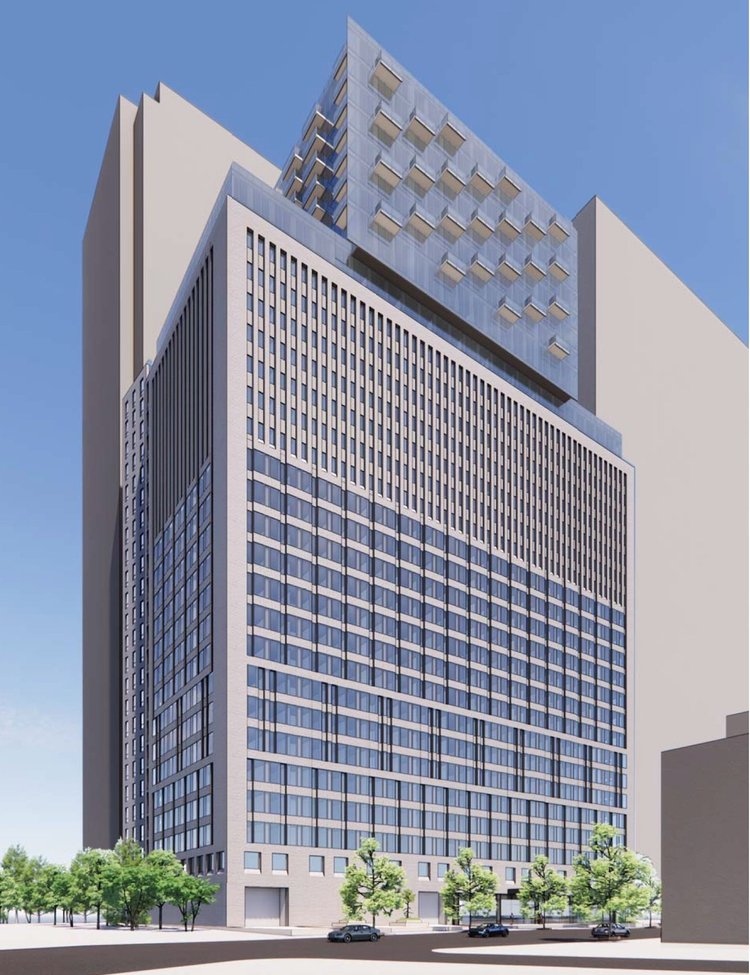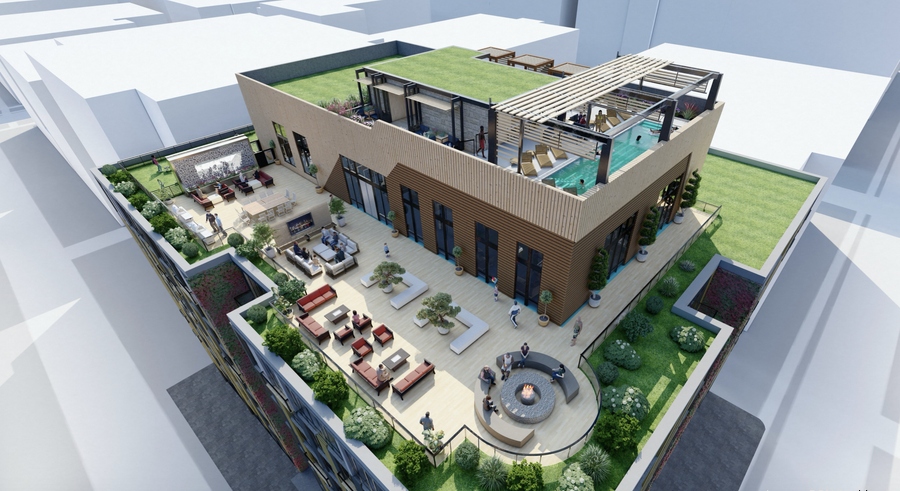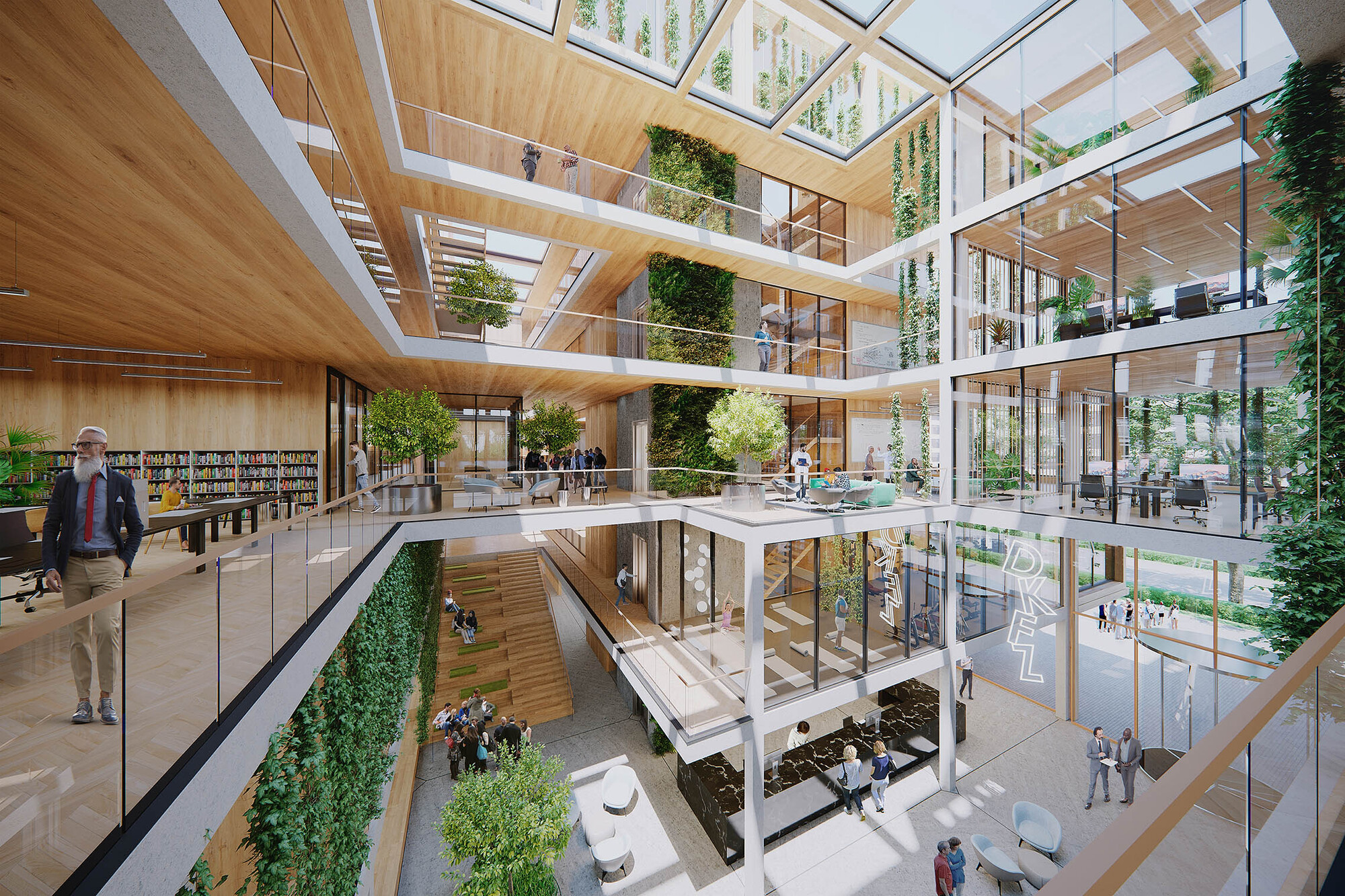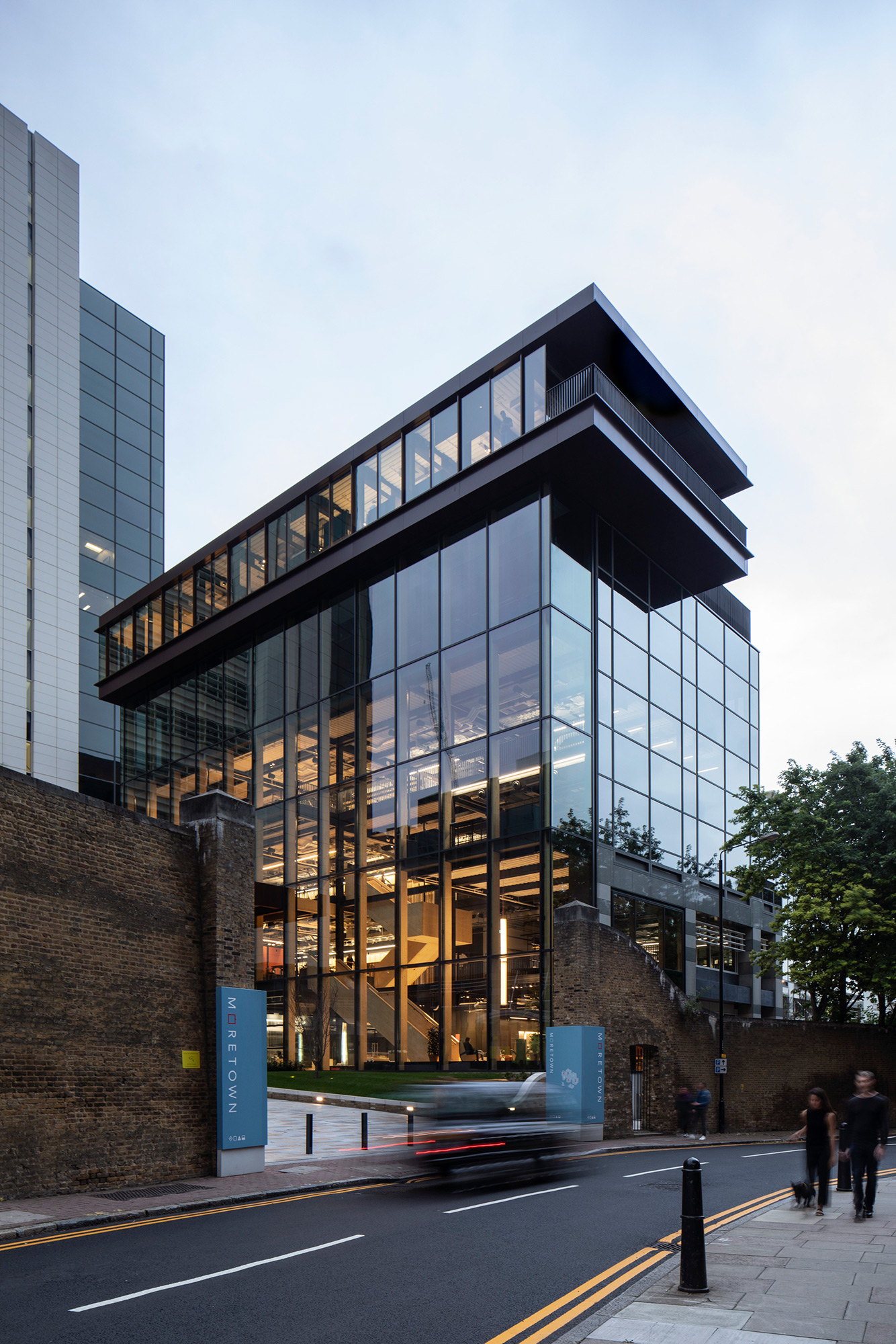Office Buildings Turn New Face - Sustainable And Smart Design Trends
Once regarded as bland and uninspiring structures, office buildings turn new face in recent years. Over the last century, building construction processes have essentially stayed unchanged, but now things are changing. A new paradigm has emerged, driven by a growing emphasis on sustainability, employee well-being, and technological advancements.
Author:George EvansJul 27, 20233.5K Shares446.7K Views

Once regarded as bland and uninspiring structures, office buildings turn new facein recent years. Over the last century, building construction processes have essentially stayed unchanged, but now things are changing. A new paradigm has emerged, driven by a growing emphasis on sustainability, employee well-being, and technological advancements.
This shift has revolutionized the design and construction of office buildings, turning them into innovative and dynamic spaces that prioritize both environmental responsibility and human-centric design.
In this article, we will explore the key trends and features as office buildings turn new face.
Sustainable Architecture - A Greener Future
Buildings utilize a lot of energy and are a major source of greenhouse gas emissions (GHG) in New York State, from single-family houses to skyscrapers. Almost 80% of buildings in the state were built before energy rules were introduced in the 1970s; they were not meant to be energy efficient.
As environmental concerns spread across industries, the need for a sustainable office building is greater than ever. The sustainable building movement is gathering steam, and you'll want to ensure that your properties don't fall behind.
Eco-Friendly Materials
One of the key pillars of sustainable architecturein office buildings is the use of eco-friendly materials. Traditional construction materials, such as concrete and steel, have significant carbon footprints associated with their production. As a result, architects are now turning to more sustainable alternatives.
For instance, recycled materials like reclaimed wood and recycled metal are gaining popularity. These materials not only reduce waste but also contribute to a unique and aesthetically appealing building design. Additionally, the use of low-VOC (volatile organic compounds) paints and adhesives ensures healthier indoor air quality for occupants.
Energy-Efficient Building Envelopes
An essential aspect of sustainable office building design is the creation of energy-efficient building envelopes. This involves the careful selection of insulation materials and optimizing the placement of windows and doors to minimize heat loss and gain.
Advanced glazing technologies, such as double-glazed or low-emissivity (low-E) windows, help regulate indoor temperatures and reduce the need for excessive heating or cooling. By mitigating energy waste, these energy-efficient envelopes contribute significantly to a building's overall sustainability.
Passive Design Strategies
Passive design strategies play a crucial role in sustainable office architecture. By harnessing natural elements like sunlight and wind, architects can create energy-efficient spaces that rely less on artificial lighting and HVAC systems.
Orientation and building placement are essential factors to consider in passive design. Aligning buildings to maximize exposure to natural light and prevailing winds can lead to reduced energy consumption. Additionally, incorporating features like shading devices, thermal mass, and natural ventilation further enhances a building's passive sustainability.
Green Roofs And Living Walls
Green roofs and living walls are becoming increasingly prevalent in modern office building design as a way to embrace nature and enhance sustainability. Green roofs are vegetated surfaces installed on top of buildings, providing numerous benefits such as improved stormwater management, reduced heat island effect, and enhanced insulation.
Living walls, on the other hand, are vertical gardens integrated into the building's exterior or interior. These living systems improve air quality by filtering pollutants and carbon dioxide while increasing oxygen production. Both green roofs and living walls contribute to a building's overall sustainability while creating aesthetically pleasing and biophilic environments for occupants.
Net-Zero And Energy-Efficiency
The urgent need to address climate change has led to the emergence of net-zero energy buildings, which strive to reduce their carbon footprints to almost zero by generating as much energy as they consume. The adoption of net-zero energy principles in office building design is a significant step towards a more sustainable future.
Renewable Energy Integration
To achieve net-zero energy status, office buildings rely on renewable energy sources to meet their power needs. Solar panels are among the most common renewable energy systems used in net-zero buildings. These photovoltaic panels convert sunlight into electricity, which can be used to power lighting, HVAC systems, and other electrical devices within the building.
Innovative architectural design allows for the strategic placement of solar panels on rooftops, facades, and even integrated into windows, maximizing energy generation potential.
Energy-Efficient Systems
Net-zero energy office buildings prioritize energy-efficient systems and appliances. Energy-efficient lighting, such as LED technology, reduces electricity consumption, while smart lighting controls and occupancy sensors ensure lights are only activated when needed.
Additionally, state-of-the-art heating, ventilation, and air conditioning (HVAC) systems are essential for reducing energy waste. Variable refrigerant flow (VRF) systems, heat recovery ventilation, and geothermal heating and cooling systems are some of the innovative solutions employed in net-zero energy buildings.
Energy Monitoring And Management
Real-time energy monitoring and management systems play a crucial role in net-zero office buildings. IoT sensors and smart meters collect data on energy consumption, allowing building operators to identify inefficiencies and optimize energy usage.
Advanced building automation systemscan adjust lighting, HVAC settings, and other electrical systems based on occupancy patterns and energy demand. This level of control ensures that the building operates at maximum energy efficiency while maintaining a comfortable environment for occupants.
Biophilic Design
Biophilic designis a transformative approach to office building design that seeks to reconnect occupants with nature by incorporating natural elements into the indoor environment. As modern office buildings turn a new face, this design philosophy has gained significant momentum, revolutionizing the way we perceive and interact with our workspace.
Natural Light And Views
One of the key elements of biophilic design is maximizing access to natural light and providing views of the outdoors. Large windows and strategically positioned workspaces allow ample daylight to flood the interior, creating a bright and uplifting atmosphere. Exposure to natural light has been linked to improved mood, enhanced cognitive function, and increased productivity among employees.
Moreover, providing views of green spaces or natural landscapes from within the office allows workers to connect with nature even when they are indoors. This connection fosters a sense of calm and relaxation, reducing stress levels and promoting overall well-being.
Indoor Plants And Greenery
Incorporating indoor plants and greenery is another hallmark of biophilic design. Plants not only add aesthetic appeal but also improve indoor air quality by filtering pollutants and increasing oxygen levels. They contribute to a healthier and more pleasant work environment, reducing instances of sick building syndrome and enhancing the overall comfort of occupants.
Living walls, vertical gardens, and potted plants strategically placed throughout the office can create a harmonious blend of nature and architecture, creating a welcoming and refreshing ambiance.
Natural Materials And Textures
Biophilic office designs often favor the use of natural materials and textures, such as wood, stone, and water elements. These materials evoke a sense of nature and authenticity, providing a visual and tactile connection with the natural world.
Wooden flooring, exposed brick walls, or stone accents add warmth and character to the office space while promoting sustainable practices by using renewable materials. These natural textures help create a sense of groundedness and tranquility in the bustling work environment.
Biomorphic Shapes And Patterns
Biophilic design draws inspiration from the forms and patterns found in nature, incorporating biomorphic shapes and motifs into the office space. Curved lines, flowing patterns, and fractal designs can be seen in elements like furniture, carpets, and wall art.
These organic shapes resonate with our innate affinity for nature and can have a calming effect on occupants. By mimicking nature's aesthetics, biophilic design nurtures a sense of connection with the natural world, which can positively influence creativity and overall job satisfaction.
Smart Technology Integration
As office buildings turn a new face, the integration of smart technology has become a driving force behind enhancing efficiency, reducing energy consumption, and optimizing building operations. Smart technology offers innovative solutions to create more sustainable and responsive office spaces.
Internet Of Things (IoT) Sensors
IoT sensors are at the core of smart technology integration in office buildings. These devices are strategically placed throughout the building to collect real-time data on various aspects such as occupancy levels, temperature, humidity, and energy usage.
The data collected from these sensors allows building operators to gain valuable insights into how the office space is utilized, enabling them to make informed decisions about energy optimization, space allocation, and comfort adjustments.
Energy Management Systems
Smart energy management systems are instrumental in reducing energy wastage and lowering operational costs. These systems can monitor and control lighting, heating, ventilation, air conditioning (HVAC), and other electrical systems to ensure they operate efficiently based on real-time demand.
By optimizing resource consumption, smart energy management systems contribute to energy efficiency and sustainability, aligning with the overall objective of modern office buildings to reduce their environmental impact.
Smart Lighting Solutions
Smart lighting solutions, such as LED technology and automated lighting controls, are essential components of smart technology integration. LED lighting consumes significantly less energy than traditional lighting options and has a longer lifespan, reducing the need for frequent replacements.
Automated lighting controls, triggered by occupancy sensors and timers, ensure that lights are only active when needed. This not only saves energy but also contributes to a comfortable and user-friendly workspace.
Building Automation
Building automation systems streamline various building operations, improving comfort and convenience for occupants. Automated systems can regulate temperature, adjust blinds or shades based on sunlight intensity, and optimize indoor air quality through smart HVAC controls.
By maintaining a comfortable and efficient working environment, building automation contributes to employee satisfaction, well-being, and productivity.
Flexible And Agile Spaces
The modern workforce is witnessing a paradigm shift in work styles, with an increasing emphasis on flexibility and adaptability. As office buildings turn a new face, they are responding to these changing dynamics by embracing flexible and agile spaces that cater to the needs and preferences of employees.
Open Floor Plans
Open floor plans have become a hallmark of flexible office spaces. Unlike the traditional cubicle-centric layout, open floor plans promote a sense of openness and transparency, facilitating better communication and collaboration among employees. This layout fosters a more inclusive and egalitarian work environment, where colleagues can easily interact and exchange ideas.
The absence of physical barriers also contributes to a greater sense of unity within teams and departments, breaking down hierarchical boundaries and promoting a culture of cooperation.
Collaboration Zones And Shared Workspaces
Flexible office spaces often incorporate dedicated collaboration zones and shared workspaces. These areas are designed to facilitate group discussions, brainstorming sessions, and impromptu meetings. Equipped with comfortable furniture and whiteboards, these zones encourage employees to come together, share insights, and spark creativity.
Shared workspaces, such as hot desks and co-working areas, provide employees with the freedom to choose where and how they work. This flexibility empowers individuals to select the environment that best suits their work tasks, enhancing productivity and overall job satisfaction.
Multi-Functional Areas And Modular Furniture
The versatility of modern office spaces is further enhanced by multi-functional areas and modular furniture. Multi-functional areas can serve as meeting spaces, informal lounges, or even event venues, providing adaptability for various activities.
Modular furniture, such as movable partitions and flexible desks, allows office layouts to be reconfigured easily based on changing needs and team sizes. This adaptability ensures that the office can evolve with the organization and its workforce, accommodating different work styles and projects as they arise.
Hybrid Work Solutions
With the rise of remote work and hybrid work models, flexible office spaces are also evolving to support these new ways of working. As employees split their time between the office and remote locations, office buildings are equipped with technology and infrastructure that enable seamless collaboration between on-site and remote team members.
Video conferencing facilities, cloud-based collaboration tools, and secure remote access to office resources ensure that employees can stay connected and engaged, regardless of their physical location. This hybrid approach empowers employees to strike a healthy work-life balance while maintaining a strong connection to the workplace.
Emphasis On Employee Well-being
Recognizing the pivotal role of employee well-being in productivity and job satisfaction, office buildings are now prioritizing the creation of a healthy and supportive work environment. An emphasis on employee well-being is a defining characteristic of the new face of office buildings.
Access To Natural Light And Outdoor Spaces
The integration of biophilic design, as discussed earlier, ensures that employees have ample access to natural light and outdoor views. Exposure to natural light has been linked to improved sleep quality, mood, and overall well-being. It also helps regulate circadian rhythms, leading to increased alertness and focus during the day.
Outdoor spaces, such as rooftop gardens or terrace areas, offer employees a chance to step outside, take a break, and recharge amidst green surroundings. These spaces provide a respite from the indoor environment and encourage physical movement, contributing to both physical and mental health.
Ergonomic Furniture And Health-Centric Amenities
Ergonomic furniture is a crucial aspect of office design that aims to support employee comfort and reduce the risk of musculoskeletal disorders. Height-adjustable desks, ergonomic chairs, and supportive accessories like footrests contribute to improved posture and overall well-being.
In addition to ergonomic furniture, health-centric amenities are becoming more prevalent in modern office buildings. On-site fitness centers, meditation rooms, and relaxation areas allow employees to take care of their physical and mental health during work hours, reducing stress and enhancing job satisfaction.
Noise Management And Acoustic Design
Office buildings are paying increasing attention to noise management and acoustic design to create a conducive work environment. Noise distractions can significantly impact employee focus and productivity. Acoustic panels, sound-absorbing materials, and strategic spatial planning help reduce noise levels and create quieter workspaces.
Additionally, office layout design may incorporate designated quiet zones or phone booths, where employees can retreat for focused work or private conversations, further contributing to a harmonious work environment.
Work-Life Balance Support
Beyond the physical aspects of well-being, modern office buildings are supporting employee work-life balance through policies and initiatives that promote holistic fulfillment. Flexible work arrangements, paid time off, and employee assistance programs are examples of how organizations are prioritizing their employees' personal well-being and life satisfaction.
Promoting work-life balance not only improves employee morale and loyalty but also leads to increased productivity and reduced burnout, resulting in a more engaged and dedicated workforce.
People Also Ask
What Are Some Key Sustainable Features In Modern Office Buildings?
Modern office buildings incorporate various sustainable features, such as green roofs and living walls, energy-efficient HVAC systems, the use of eco-friendly materials, and the integration of renewable energy sources like solar panels and wind turbines. These elements contribute to reducing the building's environmental impact and achieving certifications like LEED and BREEAM.
How Do Net-zero Energy Buildings Work, And What Benefits Do They Offer?
Net-zero energy buildings are designed to produce as much energy as they consume over a specified period, usually a year. They achieve this by integrating renewable energy sources, such as solar panels, and implementing energy-efficient technologies like LED lighting and smart HVAC systems. The main benefit is a significant reduction in the building's carbon footprint, making them environmentally responsible and contributing to combating climate change.
What Is Biophilic Design, And How Does It Impact Employees In Modern Office Buildings?
Biophilic design is an approach that seeks to connect people with nature by incorporating natural elements into the built environment. In modern office buildings, biophilic design may involve adding indoor plants, natural light, water features, and using natural materials. This design philosophy has been shown to enhance employee well-being, creativity, and productivity by reducing stress and fostering a more comfortable and inspiring workspace.
How Does Smart Technology Integration Enhance Efficiency In Office Buildings?
Smart technology integration in office buildings involves the use of IoT devices and sensors to monitor and control various systems. This includes lighting, HVAC, security, and occupancy tracking. Real-time data analysis allows building operators to optimize energy usage, identify inefficiencies, and improve overall building performance. The result is increased energy efficiency, reduced operational costs, and a more comfortable and responsive work environment.
How Are Modern Office Buildings Designed To Cater To The Needs Of The Modern Workforce?
Modern office buildings prioritize flexibility and adaptability to accommodate the diverse needs of the modern workforce. Open floor plans, collaboration zones, and shared workspaces promote communication and teamwork. Moreover, the inclusion of amenities such as fitness centers, meditation rooms, and communal areas fosters employee well-being and a sense of community within the workplace. These design choices aim to enhance employee satisfaction, productivity, and retention.
Conclusion
Office buildings turn new face in recent years. The evolution of office building design has seen a significant shift towards sustainability, smart technology integration, and employee-centric features.
Today's office buildings prioritize energy efficiency, environmental responsibility, and employee well-being to create harmonious and productive workspaces. The new face of office buildings showcases a promising future, one that is attuned to the needs of both occupants and the planet, fostering a more sustainable and prosperous working environment for years to come.

George Evans
Author
George Anderson, an exceptional architectural designer, envisions and brings to life structures that transcend the realm of imagination. With an unwavering passion for design and an innate eye for detail, George seamlessly blends form and function, creating immersive spaces that inspire awe.
Driven by a deep appreciation for the interplay of space, light, and materials, George's innovative approach redefines the possibilities of architectural design. His visionary compositions leave an indelible mark, evoking a sense of wonder and transforming the built environment.
George Anderson's transformative designs and unwavering dedication continue to shape the architectural landscape, pushing the boundaries of what is possible and inspiring generations to come.
Latest Articles
Popular Articles


